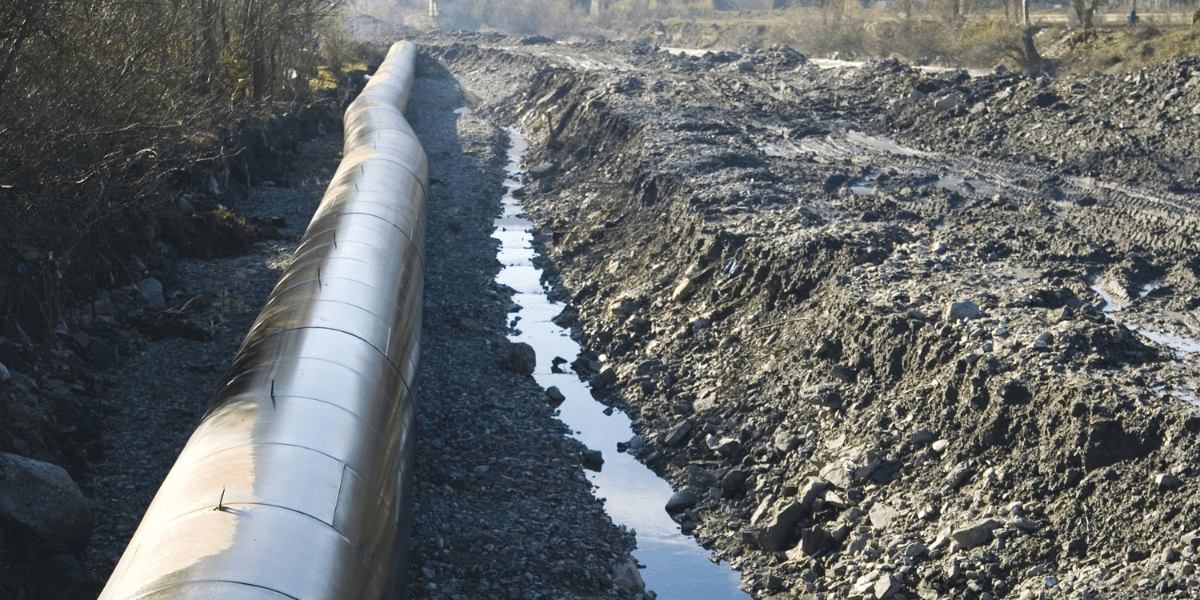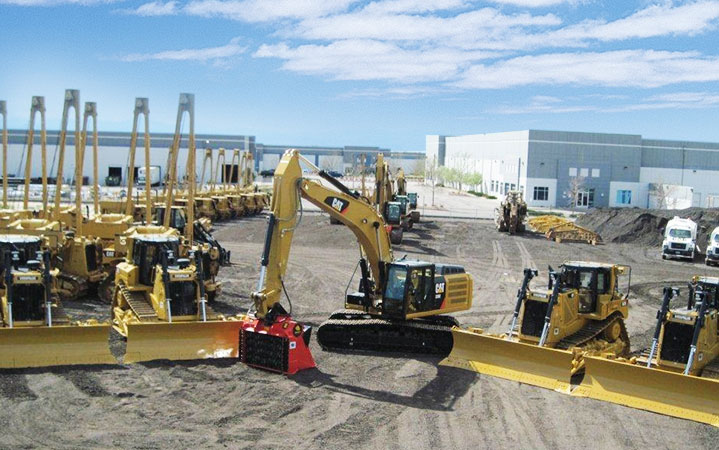Superior Oilfield pipeline equipment rentals vs owning machines: pros and cons
Wiki Article
A Comprehensive Guide to the Different Kinds Of Oil Field Equipment and Pipeline Equipment Available
The oil and gas sector depends heavily on customized devices for effective removal and transport. Different kinds of machinery, from piercing rigs to tank, play essential roles in this complicated process. Each tool offers distinctive features that add to total operational success. Comprehending these components is necessary for any person associated with the industry. As the market develops, so too do the modern technologies that support it. What innovations are on the horizon?
Drilling Rigs: The Backbone of Oil Exploration
Drilling rigs function as the important machinery in the domain of oil expedition, allowing firms to access hydrocarbon reserves buried deep underneath the Planet's surface. These rigs are available in numerous types, including land rigs, offshore rigs, and mobile systems, each designed to run in certain atmospheres. Furnished with innovative modern technology, piercing rigs can permeate geological developments with accuracy, guaranteeing reliable source extraction. The architectural stability and operational capacities of these rigs are vital, as they need to hold up against severe problems and substantial pressures. Additionally, the choice of an exploration gear influences the total task cost and timeline, making it a vital factor to consider for oil firms seeking to enhance their exploration initiatives and make best use of efficiency in their procedures.Pumps: Essential for Fluid Motion
In the oil extraction process, the duty of pumps is considerable, promoting the movement of fluids throughout numerous stages of manufacturing. Pumps are crucial for carrying crude oil, water, and various other liquids from underground reservoirs to the surface and after that via pipelines to refineries. They are available in various kinds, consisting of centrifugal, positive displacement, and completely submersible pumps, each offering certain functions based upon the fluid features and functional requirements. Centrifugal pumps are generally made use of for their performance in high-flow applications, while favorable variation pumps master handling viscous liquids. The option of pump influences total efficiency, operational security, and maintenance costs. Proper selection and maintenance of pumps are essential for optimizing manufacturing and decreasing downtime in oil area procedures.Shutoffs: Controlling Flow and Pressure

Shutoffs play a vital function in handling the flow and pressure of fluids within oil fields and pipes. Numerous kinds of shutoffs serve distinct applications, each developed to fulfill details features basic for reliable operation - Superior Rentals Contact. Comprehending the characteristics and usages of these valves is necessary for optimizing system efficiency and security
Kinds of Valves
Necessary elements in oil area procedures, shutoffs play a critical role in controlling the circulation and pressure of liquids within pipelines and tools. Numerous types of valves are made use of to meet the varied demands of oil and gas production. Usual types include gateway valves, which give a straight-line flow and marginal pressure decline; globe valves, recognized for their throttling capabilities; and sphere shutoffs, acknowledged for their quick on/off control. Additionally, check valves prevent heartburn, while butterfly shutoffs provide a lightweight option for controling circulation. Each shutoff kind is created with certain materials and configurations to stand up to the extreme problems commonly discovered in oil fields, making sure reliability and performance in procedures. Recognizing these kinds is important for effective system monitoring.Valve Applications and Functions
While numerous kinds of valves offer unique objectives, their main applications revolve around managing circulation and stress within oil and gas systems. Shutoffs such as entrance, world, and round valves control fluid activity, making sure peak efficiency and security. Entrance shutoffs are generally made use of for on/off control, giving marginal circulation resistance. World valves, on the other hand, offer accurate circulation law, making them suitable for strangling applications. Ball valves are preferred for their quick procedure and tight securing capabilities. On top of that, stress safety valve are critical for preventing system overpressure, protecting equipment stability. In general, the appropriate option and application of shutoffs improve operational efficiency, guaranteeing the dependable transport of oil and gas via pipelines and handling centers.Compressors: Enhancing Gas Transport
Compressors play a critical duty in the reliable transportation of natural gas, ensuring that it relocates smoothly with pipelines over fars away. These tools boost the stress of all-natural gas, allowing it to get rid of rubbing and altitude changes within the pipeline system. In addition, compressors facilitate the balancing of supply and demand, accommodating variations in consumption and production rates. Different kinds of compressors are utilized in the sector, including centrifugal, reciprocating, and rotary screw compressors, each offering distinctive benefits based upon the operational needs. Normal maintenance of these compressors is vital to make the most of performance and lessen downtime, ultimately adding to a trustworthy gas transport network. Their important function underscores the importance of compressors in the overall oil and gas facilities.Storage Tanks: Safe and Reliable Fluid Management
Reliable transport of gas counts on numerous support group, among which is the proper management of tank. These tanks play an important function in safely including fluids, ensuring that functional efficiency is kept while minimizing ecological dangers. Built from resilient products, they are made to stand up to high pressures and corrosive aspects. Properly sized and purposefully located, storage space tanks facilitate the smooth circulation of gas and other fluids, stopping bottlenecks in supply chains. Regular maintenance and surveillance are necessary to identify leakages motor graders or structural concerns, advertising safety and security and compliance with regulative standards. Inevitably, the effective management of tank is crucial for the total honesty and integrity of the oil and gas market's liquid handling systems.
Pipeline Systems: Framework for Transport
Pipeline systems offer as the foundation of the oil and gas market, promoting the effective transport of hydrocarbons over large ranges. These systems contain different elements, consisting of pipes, valves, pumps, and compressors, all carefully created to ensure smooth flow. The products utilized in pipeline building, usually steel or high-density polyethylene, are picked for resilience and resistance to deterioration. Pipeline networks can cover throughout land and water, connecting production sites to refineries and warehouse. In addition, progressed technology enables real-time monitoring of flow prices and stress levels, improving operational efficiency. The critical positioning of these pipes minimizes ecological impact while making the most of source access, consequently playing a vital duty in meeting energy demands globally.Safety Equipment: Ensuring Worker and Environmental Protection
The procedure of pipeline systems, while important for energy transportation, additionally provides significant safety and security challenges for employees and the setting. Safety and security equipment plays a substantial duty in minimizing these threats. Individual protective tools (PPE) such as helmets, handwear covers, and non-slip footwear safeguards workers from physical dangers. In addition, gas discovery systems keep an eye on for leaks, making sure that unsafe substances do not pose a danger to personnel or the bordering ecosystem. Emergency situation shutdown systems are critical for rapidly halting operations throughout a dilemma, preventing possible disasters. Spill containment products, consisting of absorbents and obstacles, are fundamental for reducing environmental impact. Overall, buying all-inclusive safety and security equipment is important for keeping operational honesty and shielding both workers and the environment in the oil and gas sector.
Frequently Asked Inquiries
How Do I Choose the Right Oil Field Equipment for My Project?
Selecting the right oil field devices entails examining task specifications, budget constraints, and operational requirements. Take into consideration variables such as equipment reliability, compatibility with existing systems, and the provider's reputation to ensure peak efficiency and security.What Are the Upkeep Needs for Oil Field Equipment?
Upkeep requirements for Web Site oil field tools include routine assessments, lubrication, and timely repair services. Operators should likewise comply with manufacturer standards, monitor efficiency metrics, and warranty conformity with security laws to boost longevity and effectiveness.
How Can I Guarantee Conformity With Environmental Regulations?
To assure compliance with ecological regulations, companies have to carry out regular audits, carry out ideal techniques, buy training, preserve correct documents, and remain updated on regulation (Superior Rentals near me). Collaboration with environmental companies can likewise improve adherence Visit This Link to policiesWhat Is the Typical Life-span of Pipeline Equipment?
The average life-span of pipeline tools commonly varies from 20 to 50 years, depending on factors such as material quality, ecological problems, and upkeep practices. Regular assessments can greatly influence long life and operational effectiveness.How Do I Safely Carry Oil Field Equipment to Remote Locations?
Transferring oil field devices to remote areas requires careful planning, consisting of course evaluation, safeguarding permits, utilizing appropriate vehicles, and making sure safety and security protocols are complied with. Proper training and interaction among crews are important for successful transport.Report this wiki page